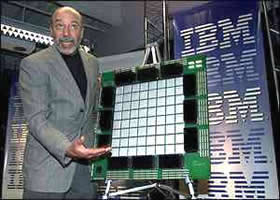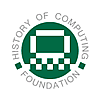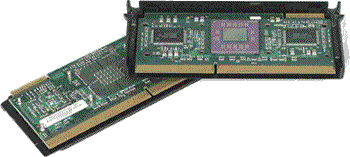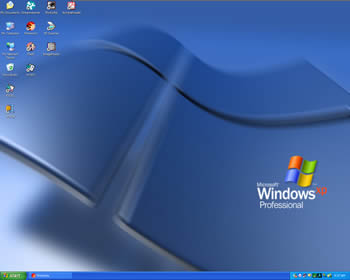click on the home button to go to the home page
|
The Industrial Era 2000 - 2001 Since you honestly can not speak of historic events
for this period the editors had the idea to display the trends in
computing that has drawn attention in previous five or ten years.
As well as promising inventions and other developments that might
be of future value. |
pre history | antiquity |
pre industrial era | industrial
era
1947
- 1950 - 1952 - 1955
- 1958 - 1961 - 1963
- 1965 - 1969 - 1970
- 1972 - 1974 - 1976
- 1978 - 1980 -
1981 - 1982 - 1984 - 1986
- 1989 - 1991 - 1993
- 1994 - 1996 - 2000
- 2002
| Related Articles | |
| Millennium
bugs Supercomputing |
|
| Related Resources | |
| pre history antiquity pre-industrial era Industrial era |
|
![]() Serious
Millennium bugs were not reported
after the transition to the new millennium. Some date related displays were
a hundred years off (see below). But in the whole the major disasters as foretold
by some (news) pundits stayed out.
Serious
Millennium bugs were not reported
after the transition to the new millennium. Some date related displays were
a hundred years off (see below). But in the whole the major disasters as foretold
by some (news) pundits stayed out.

A few satelites were off the air for some hours, and some other minor accidents with systems happened. But thanks to the measures taken by major companies and most governments in industrialized countries no serious accidents occured.
![]() Microsoft
chairman Bill Gates resigned as
CEO of his own company to dedicate himself to the development of software. Calling
himself Software Architect, a title which also can be found in books from the
Science Fiction scene (e.g. Asimov's Foundation series).
Microsoft
chairman Bill Gates resigned as
CEO of his own company to dedicate himself to the development of software. Calling
himself Software Architect, a title which also can be found in books from the
Science Fiction scene (e.g. Asimov's Foundation series).
One of his reasons were that he did not want to spent most of his time with
political and legal issues and processes against his company. That he said drains
almost all of his energy and creativeness. He will devote his time and energy
towards the architecture of software.
His long time friend Steve Ballmer
took over the helm.

![]() IBM released
a follow up of Deep Blue. Nicknamed
Blue Gene it operated at 1 Quadrillion
Ops per second (one peta flop) and was a thousand times faster than Deep Blue.
IBM released
a follow up of Deep Blue. Nicknamed
Blue Gene it operated at 1 Quadrillion
Ops per second (one peta flop) and was a thousand times faster than Deep Blue.
This computer was to be used for modeling human proteins. The search for the cause of the folding of human proteins (14) started. Unraveling the genetic code could help pharmaceutical laboratories to develop medicines.
The experimental architecture of the machine is called SMASH (Simple, Many And Self Healing) as it was designed to reduce the number of instructions for a particular processor to speed up processing. It also had what was called massive parallelism to handle about 8 million simultaneous threads of computing and possessed "self healing" abilities to prevent failures.

![]() February 6.
The website of the History of Computing
Foundation was published and a few months later a foundation was formed
(May 11) to ensure the continuity its existence.
February 6.
The website of the History of Computing
Foundation was published and a few months later a foundation was formed
(May 11) to ensure the continuity its existence.

![]() On the sixth
of February the 1000 Mega Herz(9) or Gigaherz
barrier is broken by AMD's Athlon micro processor. To be followed a few days
(9th) later by Intel's Pentium III also running on 1000 Mega Herz. In tests
they appeared to be each others equal, but the Intel chip was somewhat less
tolerant towards higher temperatures.
On the sixth
of February the 1000 Mega Herz(9) or Gigaherz
barrier is broken by AMD's Athlon micro processor. To be followed a few days
(9th) later by Intel's Pentium III also running on 1000 Mega Herz. In tests
they appeared to be each others equal, but the Intel chip was somewhat less
tolerant towards higher temperatures.
![]() March, Iridium
Satellite LLC, the company that promised to revolutionize global communications
with its satellite mobile phone system, files for bankruptcy protection.
March, Iridium
Satellite LLC, the company that promised to revolutionize global communications
with its satellite mobile phone system, files for bankruptcy protection.
![]() At Bletchley
Park museum the Enigma machine was stolen from the exhibition room. The Enigma
was a coding machine used by the Germans during W.W.II. Because of this machine's
so called 'unbreakable' code the development of computers went into an overdrive.
Hereto the Bombe and Colossus were developed and put to the job of cracking
the codes.
At Bletchley
Park museum the Enigma machine was stolen from the exhibition room. The Enigma
was a coding machine used by the Germans during W.W.II. Because of this machine's
so called 'unbreakable' code the development of computers went into an overdrive.
Hereto the Bombe and Colossus were developed and put to the job of cracking
the codes.
After the Bletchley Museum agreed to pay over 45.000 EUR or 40.000 US$ the machine
returned in October 18. But some of the coding wheels are still missing. This
was the first time a computing device is stolen from a museum at a ransom.
![]() May,
the “I Love You” virus, a.k.a. the “Love Bug” and the “Love
Letter” worm, attacks e-mail systems and multiplies across the Internet
in only six hours. Like its predecessor “Melissa”.
May,
the “I Love You” virus, a.k.a. the “Love Bug” and the “Love
Letter” worm, attacks e-mail systems and multiplies across the Internet
in only six hours. Like its predecessor “Melissa”.
![]() Cyber attacks
brought some major web sites down here attackers made use of tens of powerful
computers in various American cities and bombarded sites of e-Bay, Amazon,
CNN and Buy.com with large amounts of data: requests for information. This tactic(6)
was called "Denial of Service" and
proved to be fatal to Yahoo some weeks before. This caused Yahoo to down its
servers for a few hours.
Cyber attacks
brought some major web sites down here attackers made use of tens of powerful
computers in various American cities and bombarded sites of e-Bay, Amazon,
CNN and Buy.com with large amounts of data: requests for information. This tactic(6)
was called "Denial of Service" and
proved to be fatal to Yahoo some weeks before. This caused Yahoo to down its
servers for a few hours.
The first victim ://Buy.com an online cyber shop - that went through a successful
IPO(5) this month - was unavailable for a few hours
caused by this attack. Buy.com got 800 MBit per second to process about 8 times
the maximum capacity of what the infrastructure(4) could handle.
Usually the traffic is about 30 Mbit per second. According to Buy.com the attacks
were retraced to powerful computers from Boston, New York en Chicago.
After this auction house e-Bay had to endure an attack. Servers from eBay in
San Jose could not cope with the traffic and went down too: customers could
not be served anymore. This means the company could not earn money during that
time. A spokesperson of e-Bay said they were cooperating with other sites that
were hit and the authorities to find out the identity of the so called "cyber
terrorists" .
Two hours after the attack on E-Bay, Amazon.com got its share of the "Denial
of Service" attacks. This very popular on-line shop went down for over
an hour. About the same time CNN got under attack. Only after two hours the
attack on CNN could be fended off. Possibly by just pulling the plug first and
later to deny service (counter attack) to computers that were generating too
many requests.
Spoke persons of all Internet companies stipulated that the hackers did not
have access to data stored on the attacked servers. It is said that the FBI
was involved in the investigation to catch the hackers.(8)
![]() In Russia there
were this year many "unemployed" scientists but with almost no money
to realize their projects. Promising and interesting developments did not reach
the market because of that. One of the examples was a virtual world globe that
just waited to be picked up by the entertainment market.
In Russia there
were this year many "unemployed" scientists but with almost no money
to realize their projects. Promising and interesting developments did not reach
the market because of that. One of the examples was a virtual world globe that
just waited to be picked up by the entertainment market.
 .
.
This globe represented a virtual world in which you could walk, run and fall down without you had to wear a data suit. It was developed by the brothers Latypov (www.virtusphere.com) (10)
![]() June,
a federal judge orders Microsoft to breakup, condemning Microsoft as a monopolist
and orders the company to separate its MS Windows operating system product from
their other software applications. Microsoft appealed the ruling.
June,
a federal judge orders Microsoft to breakup, condemning Microsoft as a monopolist
and orders the company to separate its MS Windows operating system product from
their other software applications. Microsoft appealed the ruling.
![]() June, first
survey of the entire human genome completed in a race against the clock between
competitors: the Human Genome Project (HGP), and representatives of the biotechnology
company Celera announced the completion of a first model DNA sequence of the
human genome. This provided scientists worldwide with a map to an approximated
90 percent of the genes on every chromosome(16). Though this
figure is contested by some scientists, they said that the map is just a crude
cut through the entire genome and that it will take another few years to complete
the entire genome. The debate that has risen is that commercial companies wanted
to patent the information and scientists wanted to have it in the public domain.
Ethically spoken scientists said nobody can claim copyright or patents on any
material deriving form the human genome.
June, first
survey of the entire human genome completed in a race against the clock between
competitors: the Human Genome Project (HGP), and representatives of the biotechnology
company Celera announced the completion of a first model DNA sequence of the
human genome. This provided scientists worldwide with a map to an approximated
90 percent of the genes on every chromosome(16). Though this
figure is contested by some scientists, they said that the map is just a crude
cut through the entire genome and that it will take another few years to complete
the entire genome. The debate that has risen is that commercial companies wanted
to patent the information and scientists wanted to have it in the public domain.
Ethically spoken scientists said nobody can claim copyright or patents on any
material deriving form the human genome.
![]() This year brought
us some virulent virus
attacks, bomb letters and the first Linux virus was detected.
This year brought
us some virulent virus
attacks, bomb letters and the first Linux virus was detected.
![]() Official Launch
of Windows 2000 - Microsoft's replacement for Windows 95/98 and Windows NT.
Microsoft claimed W2K to be faster and more reliable than previous versions
of Windows.
Official Launch
of Windows 2000 - Microsoft's replacement for Windows 95/98 and Windows NT.
Microsoft claimed W2K to be faster and more reliable than previous versions
of Windows.
But it actually was a descendant of the NT series - thus a UNIX based kernel
- the tradeoff for increased reliability was that it won't run some old DOS-based
games or programs anymore.
To keep the home market happy Microsoft also released Windows ME, the newest
member of the 95/98 series.(Feb. 17) (3) This version proved
to have too many bugs in its software and it was going to be replaced by the
next generation before long: Windows XP.
![]() March, as Internet
companies struggle to improve their financial situations, the Securities and
Exchange Commission (SEC) begins an investigation of a $12.2 million stock transaction
by Jeff Bezos, founder of Amazon.com. The allegations come at a time when Internet
companies are experiencing dramatic devaluation in their stock prices. Experts
point to the plummeting stock prices as evidence that the Internet stock bubble
has burst.(16)
March, as Internet
companies struggle to improve their financial situations, the Securities and
Exchange Commission (SEC) begins an investigation of a $12.2 million stock transaction
by Jeff Bezos, founder of Amazon.com. The allegations come at a time when Internet
companies are experiencing dramatic devaluation in their stock prices. Experts
point to the plummeting stock prices as evidence that the Internet stock bubble
has burst.(16)
![]() Also this year
there were many cases in court concerning patents and the ongoing case of Microsoft's
monopolistic behavior.
Also this year
there were many cases in court concerning patents and the ongoing case of Microsoft's
monopolistic behavior.
(June 29) Judge reversed a lower court decision to split up Microsoft Corporation, but also stated that Microsoft did act illegally in its actions to maintain its dominant position in the area of PC Operating Systems.
British Telecom (BT) claimed the rights on hyperlinks on the basis of a US patent (#4873662) granted in 1989. Similar patents in the rest of the world have expired. Their claim is widely believed to be absurd since Ted Nelson wrote about hyperlinks in 1965, and this is where Tim Berners Lee said he got the ideas for the World Wide Web from. This is just another in the line of similar incredulous cases - for example amazon.com's claim to have patented '1-click ordering'. (June 20) (3)
BT even started to sue Prodigy, the oldest and largest public provider, to charge license fees. The claim is dismissed on the basis that BT's claim concerned server oriented technology and not client based documents which were not even invented when BT filed its patent.In March a federal judge issues an injunction against MP3 music site Napster, requiring the company to begin blocking copyrighted music files. The ruling deals a blow to Napster, which continues to operate despite the ruling.
In an effort to continue operating without legal restrictions, MP3 music site Napster and its partner, Bertelsmann AG, offer to pay $1 billion in licensing fees over the next five years to the Recording Industry Association of America (RIAA). The industry association rejects the offer and legal wrangling continues.(16)
![]() Personal Computers
with CPU's in excess of 1.4 Gigahertz speed came on the market.
Personal Computers
with CPU's in excess of 1.4 Gigahertz speed came on the market.
![]() US Government
announced restrictions on exporting cryptography technology to be relaxed (although
not removed). This allowed many US companies to stop the long running, and rather
ridiculous process of having to create US and International copies of their
software. (Jan. 14)(3)
US Government
announced restrictions on exporting cryptography technology to be relaxed (although
not removed). This allowed many US companies to stop the long running, and rather
ridiculous process of having to create US and International copies of their
software. (Jan. 14)(3)
In concurrence with that announcement RSA Security Inc. released their RSA
algorithm to the public domain, in advance of the US patent (#4,405,829) expiring
on the 20th September following the relaxation of the US government restrictions
earlier in this year. And by doing so the organization removed one of the last
barriers to the worldwide distribution of much software based on cryptographic
systems.
It should be noted that the IDEA algorithm is still under patent and also that
US government restrictions still applied in some places. (Sept. 6) (3)

![]() Microsoft released
Windows XP - the latest version of their Windows operating system. Based on
the NT series kernel, it was intended to bring together both the NT/2000 series
and the Windows 95/98/ME series into one product. Of course it was originally
hoped that this would happen with Windows 2000 ... But only time will tell if
Microsoft have succeeded with Windows XP. (Oct. 25) (3)
Microsoft released
Windows XP - the latest version of their Windows operating system. Based on
the NT series kernel, it was intended to bring together both the NT/2000 series
and the Windows 95/98/ME series into one product. Of course it was originally
hoped that this would happen with Windows 2000 ... But only time will tell if
Microsoft have succeeded with Windows XP. (Oct. 25) (3)

![]() Gordon
Moore stated (May 2nd) that his
law should be changed from doubling of transistors on integrated circuitry
every two years into every four or five years starting 2010 or 2020. The fact
that this law held for almost 36 years was a miracle when you saw the speed
of change in this field. (See also (1964)
Gordon
Moore stated (May 2nd) that his
law should be changed from doubling of transistors on integrated circuitry
every two years into every four or five years starting 2010 or 2020. The fact
that this law held for almost 36 years was a miracle when you saw the speed
of change in this field. (See also (1964)
![]() Do we get a
patron for the Internet? The catholic church wanted to propose Isodorus de Sevilla
who lived in 656 and wrote probably the first western encyclopedia.
Do we get a
patron for the Internet? The catholic church wanted to propose Isodorus de Sevilla
who lived in 656 and wrote probably the first western encyclopedia.
And as usual there were more candidates: Titus Brandsma (a Dutch priest- no
picture), San Pedro de Regalado (Spain) and Santa Tecla (Bask - Spain)
 |
|
 |
![]() The Federal
Communications Commission (FCC) approves the AOL Time Warner merger. The merger,
announced in January 2000 as the largest corporate merger in US history, is
subject to conditions outlined by the FCC. The takeover marks the first time
a new corporate giant created by the Internet boom used the “new economy”
value of its stock to acquire an older Fortune 500 company.(16)
The Federal
Communications Commission (FCC) approves the AOL Time Warner merger. The merger,
announced in January 2000 as the largest corporate merger in US history, is
subject to conditions outlined by the FCC. The takeover marks the first time
a new corporate giant created by the Internet boom used the “new economy”
value of its stock to acquire an older Fortune 500 company.(16)
![]() According to
a study from IDC about 460 million people are now connected to the Internet.
Forecasts want us to believe that there will be over 1 billion connections within
the next 5 years, meaning a small twenty percent of the contemporay population
of the world (?).
According to
a study from IDC about 460 million people are now connected to the Internet.
Forecasts want us to believe that there will be over 1 billion connections within
the next 5 years, meaning a small twenty percent of the contemporay population
of the world (?).
![]() Apple released
MacOS X. At it's heart is `Darwin', an Open Source kernel based on FreeBSD.
Using this MacOS X finally gives Mac users the stability benefits of a protected
memory architecture along many other enhancements, such as preemptive multitasking.
The BSD base also makes porting UNIX applications to MacOS easier and gives
Mac users a fully featured command line interface alongside their GUI.(19)
Apple released
MacOS X. At it's heart is `Darwin', an Open Source kernel based on FreeBSD.
Using this MacOS X finally gives Mac users the stability benefits of a protected
memory architecture along many other enhancements, such as preemptive multitasking.
The BSD base also makes porting UNIX applications to MacOS easier and gives
Mac users a fully featured command line interface alongside their GUI.(19)
![]()
| Last Updated on June 14, 2004 | For suggestions please mail the editors |
Footnotes & References